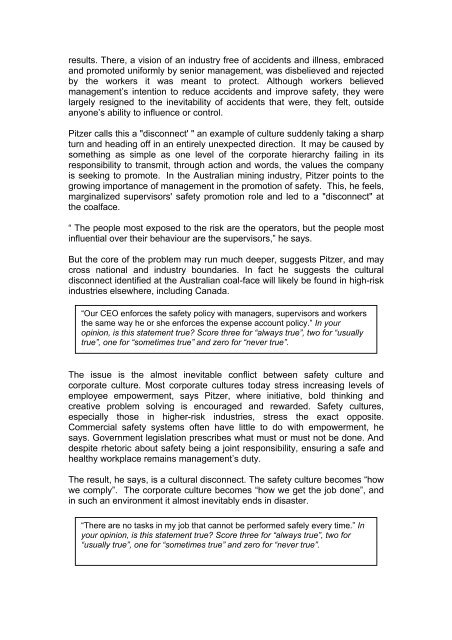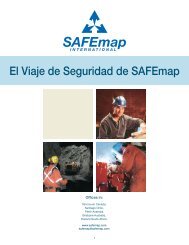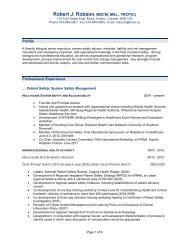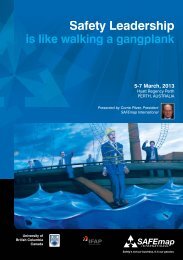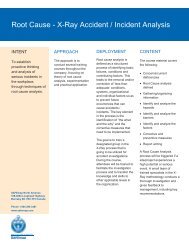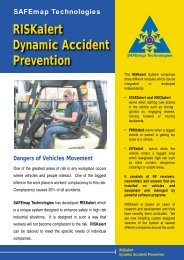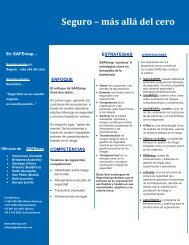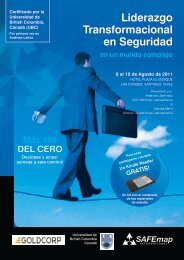A Matter of Perception - SAFEmap International
A Matter of Perception - SAFEmap International
A Matter of Perception - SAFEmap International
Create successful ePaper yourself
Turn your PDF publications into a flip-book with our unique Google optimized e-Paper software.
esults. There, a vision <strong>of</strong> an industry free <strong>of</strong> accidents and illness, embracedand promoted uniformly by senior management, was disbelieved and rejectedby the workers it was meant to protect. Although workers believedmanagement’s intention to reduce accidents and improve safety, they werelargely resigned to the inevitability <strong>of</strong> accidents that were, they felt, outsideanyone’s ability to influence or control.Pitzer calls this a "disconnect' " an example <strong>of</strong> culture suddenly taking a sharpturn and heading <strong>of</strong>f in an entirely unexpected direction. It may be caused bysomething as simple as one level <strong>of</strong> the corporate hierarchy failing in itsresponsibility to transmit, through action and words, the values the companyis seeking to promote. In the Australian mining industry, Pitzer points to thegrowing importance <strong>of</strong> management in the promotion <strong>of</strong> safety. This, he feels,marginalized supervisors' safety promotion role and led to a "disconnect" atthe coalface.“ The people most exposed to the risk are the operators, but the people mostinfluential over their behaviour are the supervisors,” he says.But the core <strong>of</strong> the problem may run much deeper, suggests Pitzer, and maycross national and industry boundaries. In fact he suggests the culturaldisconnect identified at the Australian coal-face will likely be found in high-riskindustries elsewhere, including Canada.“Our CEO enforces the safety policy with managers, supervisors and workersthe same way he or she enforces the expense account policy.” In youropinion, is this statement true? Score three for “always true”, two for “usuallytrue”, one for “sometimes true” and zero for “never true”.The issue is the almost inevitable conflict between safety culture andcorporate culture. Most corporate cultures today stress increasing levels <strong>of</strong>employee empowerment, says Pitzer, where initiative, bold thinking andcreative problem solving is encouraged and rewarded. Safety cultures,especially those in higher-risk industries, stress the exact opposite.Commercial safety systems <strong>of</strong>ten have little to do with empowerment, hesays. Government legislation prescribes what must or must not be done. Anddespite rhetoric about safety being a joint responsibility, ensuring a safe andhealthy workplace remains management’s duty.The result, he says, is a cultural disconnect. The safety culture becomes “howwe comply”. The corporate culture becomes “how we get the job done”, andin such an environment it almost inevitably ends in disaster.“There are no tasks in my job that cannot be performed safely every time.” Inyour opinion, is this statement true? Score three for “always true”, two for“usually true”, one for “sometimes true” and zero for “never true”.


